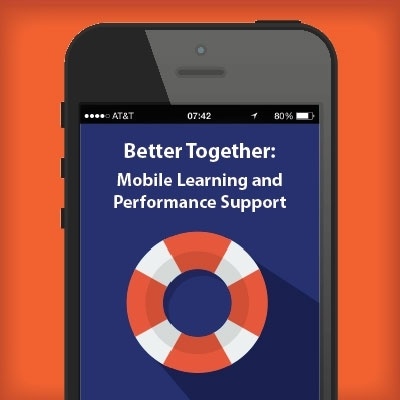How To Support Learners Through Their Mobile Devices
Like all technologies, mobile learning comes with its own affordances, possibilities, and limitations. With some thought and planning, we can successfully support learners through their mobile devices.
1. Use Mobile As A Medium To Deliver Learning In Regular, Short Bursts (Microlearning, Distributed Practice)
This involves sending short, microlearning modules to learners at designated intervals. Though on the face of it this looks like chunking large courses into smaller pieces, keep in mind that while designing such distributed learning, appropriate repetition and practice need to be considered. Each piece of learning will then remain comprehensive, and learners will be able to easily assimilate, digest, and retain information as they consume small amounts each day.
2. Allow Some Quick Reading / Watching / Listening Before A Formal Training Session
Want learners to come prepared for a face-to-face training session? Or need them to be familiar with a case study before they take an eLearning course? No problem. Just send them a link containing the material a day or two before the session, and they should be able to catch up with it on their devices.
3. Send Follow-Up Content / Quizzes After A Course (Retrieval Practice)
Mobile is a great medium for post-course follow-ups for retrieval practice. These follow-ups can range from simple pointers reminding learners of what they learnt in the session, to game-based quizzes that they take based on the concepts covered. Other forms of retrieval practice could involve success and failure stories, case studies, additional examples, tips and tricks, content updates, etc.
4. Reinforce Learning Through Reflection
Similar to follow-up content, retrieval practice can also include questions that prompt thinking and reflection, and can be sent via learners’ mobile devices. Reflection is believed to have great benefits for learning, so why not use an available medium to prompt and encourage reflection?
5. Use Mobile As A Trigger To Prompt, And Nudge Towards, The Desired Behaviors
Mobile devices, because of their personal and ubiquitous nature, lend themselves to be used for prompting action on the job too. After all, the purpose of learning is to change behavior. So why stop with just helping people learn, especially when we can support behavior change on the job in real-time? Triggers could include simple reminders to do a task, or reports designed to encourage learners to perform something.
6. Just-In-Time Support (Performance Support)
This is probably one of the most common uses of mobile devices in the learning and performance context. Learners can access support in their moment of need, and this can be in any of the following forms:
- Searchable databases of information.
- Expert videos organized in a library.
- Blogs and wiki pages full of useful content and links.
- Guidelines and checklists.
- Animations or videos explaining how a task is to be performed.
- Job aids containing factual / conceptual / procedural information.
7. Provide Location-Sensitive Information / Guidance
There are plenty of work contexts in which people are expected to do certain tasks based on the location they are in. For example, PPE (Personal Protective Equipment) requirements vary for different areas of a large manufacturing facility. While employees may be required to wear safety goggles and gloves while working in high heat areas, they may just need a helmet or hard hat for areas in which construction work is happening. For such cases, it is possible to attach triggers to learners’ mobile devices, raising an alert about the PPE requirements for an area the moment they enter that area.
8. Let User-Generated Content Take Center Stage
This is a useful strategy for new and novel topics, for which experts and expertise are not readily available. For example, take the case of the students of a research program, who are conducting research on a specific type of pollen which is found in the surrounding areas of a city. The students fan out in teams, each team visiting a different area in search of the pollen. Their task is to document their findings and compare notes at the end of the visit, so that the entire group can learn collectively from everyone’s experiences. A mobile app which facilitates this note taking, and then consolidates these notes into a single, larger database for further analysis, can prove invaluable.
9. Allow Communities Of Practice To Form And Flourish
The constant rise of social media and collaboration tools for the workplace only points to an ever-growing need – the need for people to learn from each other. Human beings are inherently social, and a platform that enables ongoing communication with fellow learners, experts, etc. will help speed up the process of learning.
What do you think? Have I missed anything? Please share your thoughts in the Comments section below.
Looking to implement mobile learning in your organization? Please get in touch with us at [email protected].









